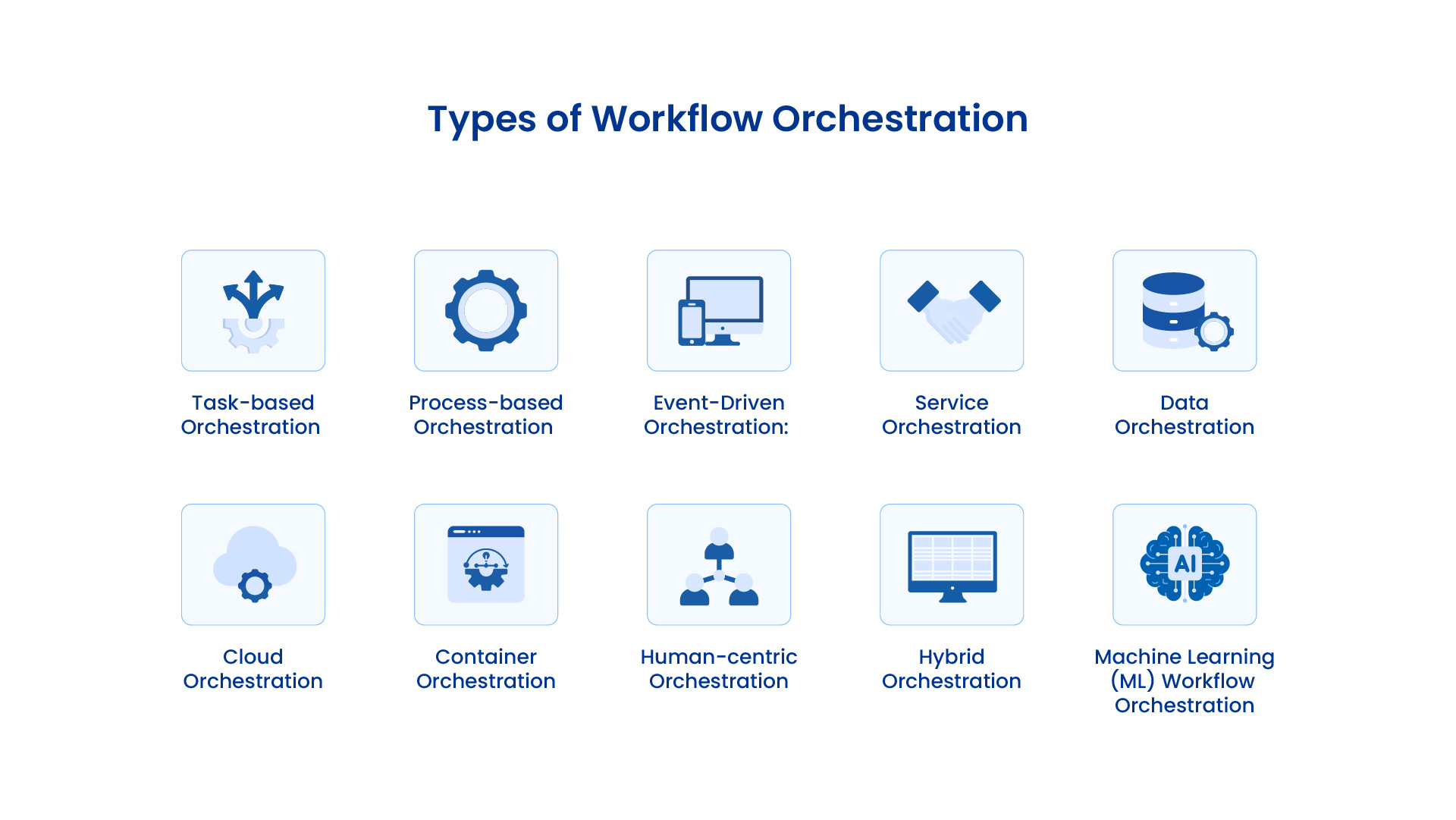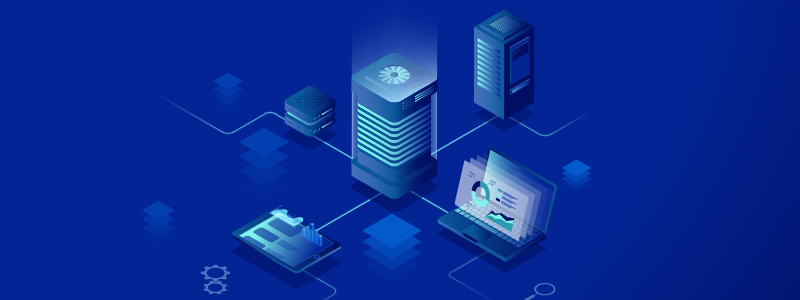
What is Workflow Orchestration? A Complete Guide
Workflows determine how organizations conduct processes. These workflows can initially be very straightforward—just a simple series of steps that must be completed sequentially to achieve a particular outcome. However, the steps can become more complicated as business processes and requirements become more extensive.
Your organization needs to keep these workflows running smoothly even as they become more complicated. Each iteration needs to incorporate evolving data sources, objectives, and other components while maintaining efficiency, and workflow orchestration helps you accomplish this.
What is Workflow Orchestration?
Workflow orchestration is the automation of workflows. It involves coordinating and synchronizing numerous complex workflows within a business and monitoring them to ensure they run as required. The objective is to ensure the smooth functioning of each workflow individually and collectively.
Workflow orchestration’s scope differentiates it from standard automation. Organizations automate various everyday tasks to save time and effort. However, these isolated instances of automation aren’t the same as strategically linking automations to create a collaborative, efficient system.
Need for Workflow Orchestration
The following factors illustrate the need for workflow orchestration:
- Efficiency:Automated task sequences eliminate the need for manual intervention, decreasing the time required to complete a process. For instance, a company that processes hundreds of customer orders daily can automate its order fulfillment process from the beginning (order receipt) to the end (packaging and shipment) to eliminate human errors and ensure timely deliveries.
- Uniformity: Workflow orchestration ensures that tasks and workflows are always executed uniformly, minimizing inconsistencies. This is especially important in industries like healthcare, where consistent data processing improves patient experience by enabling accurate diagnoses and decreasing medical errors.
- Resource Optimization: Workflow orchestration helps ensure that tasks are assigned appropriately, optimizing computational and human resource utilization. In a cloud environment, orchestration will allocate the necessary computing power for data processing to avoid underutilization and overprovisioning.

Types of Workflow Orchestration
-
Task-based Orchestration
It automates and coordinates specific tasks within a workflow, managing execution orders and dependencies. It is ideal for repetitive tasks like data entry, report generation, and system monitoring.
-
Process-based Orchestration
Manages entire business processes from start to finish, focusing on end-to-end process automation. It suits business process management scenarios such as order processing, customer service workflows, and supply chain management.
-
Event-Driven Orchestration
Triggers workflows based on specific events or conditions, using event listeners to detect changes and initiate workflows. Event-driven orchestration effectively meets real-time processing needs like system monitoring for alerts, responding to customer actions on websites, and managing IoT devices.
-
Service Orchestration
Coordinates and manages services in a microservices architecture, ensuring seamless interaction between services. Common in cloud-native applications, microservices-based systems, and service-oriented architectures (SOA).
-
Data Orchestration
Manages the flow and processing of data across systems and data stores, ensuring accurate data transfer, transformation, and loading. This is crucial in big data environments, ETL processes, and data integration projects. You can use data orchestration tools to monitor data flows and enforce your data governance policies.
-
Cloud Orchestration
It automates the management of cloud resources, including provisioning, scaling, and configuration. It is key for managing complex cloud-based infrastructures, hybrid cloud environments, and automated cloud deployment processes.
-
Container Orchestration
Manages containerized applications, automating deployment, scaling, and operation of containers. Prominent in environments using Docker, Kubernetes, and other container technologies for deploying and managing applications.
-
Human-centric Orchestration
Integrates human tasks within automated workflows, allowing for human intervention where necessary. Useful in processes requiring human decision-making, approvals, or reviews, such as HR workflows, legal processes, and customer service operations.
-
Hybrid Orchestration
Combines multiple types of orchestration to handle complex workflows spanning various systems, environments, and technologies. Suitable for large enterprises with diverse IT ecosystems, where workflows need to interact with on-premises systems, cloud services, and human tasks.
-
Machine Learning (ML) Workflow Orchestration
Machine Learning Workflow Orchestration involves automating and managing the various stages of the ML lifecycle, from data consolidation and preprocessing to model training, deployment, and monitoring. This orchestration is vital for deploying and managing ML models in applications like predictive maintenance, recommendation systems, and autonomous systems.
Use Astera's Workflow Designer to Create Job Flows
Astera offers job orchestration and control through Workflow Designer, a visual interface that helps you create job flows quickly and easily. Try it now!
Start Your FREE TrialHow Workflow Orchestration Works
- Defining Tasks: Orchestration describes the tasks that require execution, including any dependencies and desired outcomes. Each task is an individual unit of work, such as extraction, transformation, or loading (ETL) using data pipelines, report generation, or email notification.
- Sequence and Dependencies: All tasks and interdependencies are configured to be executed in the correct sequence. For instance, when setting up a workflow involving ETL tasks, extraction must precede transformation, and transformation should occur before loading the data into its final destination.
- Resource Allocation: Users assign each task the necessary resources (both computational and human). These resources can include memory, software tools, or CPU usage.
- Execution: The execution component involves scheduling, executing, and managing tasks. The workflow orchestrator triggers tasks according to the defined sequence and dependencies. It also assesses their progress and deals with any errors or exceptions.
- Error Handling and Recovery: Error- and exception-handling mechanisms are implemented to ensure uninterrupted workflow execution. This includes configuring retry policies, fallback procedures, and alerts that promptly notify relevant stakeholders of issues.

Workflow vs. Data Orchestration
Both workflow and data orchestration aims to streamline processes. However, they focus on different aspects. Here’s a closer look at both:
- Workflow Orchestration: Coordinates and manages the sequence of tasks within a business process to ensure that each step is properly executed. It’s focused on the overall flow of activities from beginning to end.
- Data Orchestration: Data orchestration focuses primarily on data movement and transformation through various systems and platforms. It ensures that data is available where and when it’s required. Data orchestration involves tasks such as ETL and data synchronization across databases, data lakes, and data warehouses.
Workflow orchestration deals with managing tasks and processes, while data orchestration involves managing data flow. There’s some overlap between the two, particularly in data-intensive workflows where orchestrating data-related tasks is vital to the overall process.
Implementing Workflow Orchestration
Implementing workflow orchestration involves several steps:
- Needs Assessment: Start by thoroughly analyzing your current workflows to find the areas where automation can benefit the most. Focus on identifying repetitive, time-consuming, and error-prone tasks as orchestration can readily streamline them.
- Tool Selection: You need an appropriate workflow orchestration tool for your needs. Evaluate your options based on ease of use, features, scalability, and ease of integration with your current systems. You may prefer open-source workflow orchestration tools for their flexibility and customizability or proprietary options for their security and reliability.
- Defining Workflows: Clearly define your workflows, including tasks, dependencies, and resources. Map out each step of the process using a structured approach to identify important milestones, decision points, and potential bottlenecks.
- Setting Up Monitoring: Configure monitoring and logging to help you track workflow execution and identify and resolve issues. Dashboards and alerting systems can offer real-time visibility into workflow status and health.
- Test and Optimize: Use testing environments to simulate scenarios, spot potential issues, and fine-tune workflows for optimal performance.
- Personnel Training: Ensure your team has adequate training and is comfortable using your selected orchestration tool and handling workflows.
- Security and Compliance: Implement security protocols such as access controls and data encryption to protect sensitive data and comply with industry regulations. Additionally, audit trails can help you monitor workflow activities.
More Than Just Job Execution
Use Workflows in Astera for SQL execution, outside program execution, sending emails, and taking file system and FTP actions. Find out how!
Sign Up for a DemoBenefits and Challenges of Workflow Orchestration
Benefits:
- Enhanced Accuracy
Workflow orchestration improves customer satisfaction by automating routine tasks, expediting processes, and liberating human resources for strategic activities. For example, automating marketing email campaigns or financial services loan processing reduces turnaround times.
- Visibility and Control
Real-time monitoring provided by workflow orchestration tools ensures continuous oversight of task progress, enabling timely adjustments and proactive issue resolution. This is especially critical in supply chain management and customer service to ensure smooth operations and quick issue resolution.
- Faster Time-to-Market
Workflow orchestration simplifies the development and deployment of new products and services, speeding up time-to-market and fostering innovation by automating routine tasks. In software, automated CI/CD (continuous integration/continuous deployment) pipelines enable fast, reliable releases and allocate more resources to strategic initiatives.
- Enhanced Collaboration
Centralized workflow management provided by orchestration tools enhances team collaboration and communication with real-time updates on task status. This improves project management by ensuring visibility into task assignments, progress, and deadlines while reducing miscommunication.
- Adaptability
Workflow orchestration enables quick adaptation to changing market conditions and continuous process improvement by providing insights into workflow performance. In the retail industry, this allows for rapid adjustments to promotional campaigns based on real-time sales data and helps identify areas for optimization.
Challenges:
- Complexity
Implementing workflow orchestration requires a thorough understanding of business processes and the ability to design and manage complex workflows with multiple dependencies. This can be challenging and time-intensive, especially for large organizations with intricate processes.
- Initial Setup Costs
The initial setup of workflow orchestration tools and infrastructure requires a substantial investment in software licenses, hardware, and consulting services. It is also essential to adequately train employees and manage the change process to ensure the staff are comfortable with the changes.
- Continuous Monitoring
Continuous workflow monitoring is crucial to maintaining efficiency. It requires tools and dashboards to track performance metrics and handle errors. Implementing mechanisms to manage errors and exceptions, such as retry policies and alerts, ensures smooth workflow execution.
- Security and Compliance
Ensuring the security and privacy of sensitive data in workflow orchestration involves implementing access controls, data encryption, and audit trails. Organizations must also comply with industry regulations and standards, using orchestration tools for compliance management and reporting.
- Integration with Existing Systems
Integrating workflow orchestration tools with existing systems and ensuring compatibility with legacy systems can be difficult. Seamless data flow and communication between platforms requires careful planning, technical expertise, and potentially custom solutions.
Summing It Up
In conclusion, workflow orchestration is a powerful tool for managing complex processes and data workflows. Automating the coordination and management of tasks ensures efficiency, accuracy, and scalability. However, choosing the right tools and approach is essential to overcome the challenges and reap the benefits.
Astera is an end-to-end data management tool that enables you to orchestrate ETL processes easily. Its intuitive no-code interface makes it easy to create custom dataflows, configure them to run on a schedule and monitor them for potential issues. Discover how Astera can transform your workflow orchestration — contact us today to learn more!
 Astera AI Agent Builder - First Look Coming Soon!
Astera AI Agent Builder - First Look Coming Soon!